The island’s fiestas are a testament to its rich heritage, blending historical, religious, and folklore elements into celebrations that captivate both locals and visitors. This guide will take you through some of the most significant traditional fiestas in Palma de Mallorca and across the island, ensuring you can immerse yourself in these lively and colorful events.
Fiestas in Palma de Mallorca
1. Sant Sebastià
Sant Sebastià, held in mid-January, is Palma’s biggest and most important festival, honoring the city’s patron saint, Saint Sebastian. The festivities last for about a week, culminating on January 20th, and include a variety of events:
- Revetla de Sant Sebastià: The night before the feast day, Palma’s streets come alive with music, dancing, and bonfires. This is known as the Revetla, where different squares host live music performances ranging from rock to traditional folk music.
- Correfoc: This “fire run” is a spectacular event where participants dress as demons and dance through the streets with firecrackers and fireworks, creating a thrilling and unforgettable experience.
- Processions and Religious Ceremonies: On the day of Sant Sebastià, there are solemn processions and religious ceremonies held in the city’s cathedral, offering a glimpse into the island’s deep-rooted Catholic traditions.
2. Nit de Sant Joan
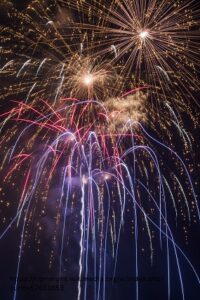 Celebrated on the night of June 23rd, Nit de Sant Joan marks the summer solstice and is a night of fire and magic. It is one of the most anticipated fiestas in Palma, particularly at the beaches and parks:
Celebrated on the night of June 23rd, Nit de Sant Joan marks the summer solstice and is a night of fire and magic. It is one of the most anticipated fiestas in Palma, particularly at the beaches and parks:
- Bonfires and Fireworks: The night is famous for its bonfires and spectacular fireworks displays. Locals and tourists gather at beaches like Playa de Palma to light fires, jump over them for good luck, and enjoy the vibrant atmosphere.
- Water and Fire Rituals: People also participate in water rituals, symbolizing purification and renewal. Many take a midnight swim in the sea, which is believed to cleanse and protect for the coming year.
3. Festa de la Mare de Déu de la Salut (Festival of Our Lady of Health) in Palma
Held in early September, this festival honors Palma’s co-patroness, Our Lady of Health. It is a time of cultural expression and traditional music:
- Processions: The festival features a grand procession through the city, with participants carrying the image of the Virgin Mary, accompanied by traditional music and dance.
- Folk Dances and Concerts: Various squares in Palma host folk dance performances, known as “ball de bot,” along with concerts and theatrical performances, highlighting the island’s rich cultural heritage.
Main Fiestas Around Mallorca
4. Fira de la Flor (Flower Festival) in Costitx
The small village of Costitx becomes a vibrant hub of color and fragrance during the Fira de la Flor, held in May:
- Flower Displays: The village is adorned with stunning flower arrangements and decorations, transforming it into a floral paradise. Each year has a different theme, showcasing the creativity and horticultural skills of the locals.
- Local Products and Crafts: Visitors can also explore stalls selling local products, crafts, and food, enjoying the charming atmosphere and warm hospitality.
5. Sant Antoni Abat in Sa Pobla
Celebrated on January 16th and 17th, the Sant Antoni Abat festival in Sa Pobla is one of Mallorca’s most traditional and vibrant fiestas:
- Bonfires and Torrades: The festival is known for its bonfires and “torrades” (barbecues). People gather around the fires to grill sausages, meats, and vegetables, creating a festive communal atmosphere.
- Demon Dances: The “dimonis” (demons) are a central feature of the celebrations. Dressed in elaborate costumes, they dance through the streets to the beat of drums, symbolizing the triumph of good over evil.
- Blessing of the Animals: On the feast day, there is a blessing of animals, honoring Saint Anthony, the patron saint of animals. Locals bring their pets and livestock to be blessed by the priest.
6. Moros i Cristians in Sóller
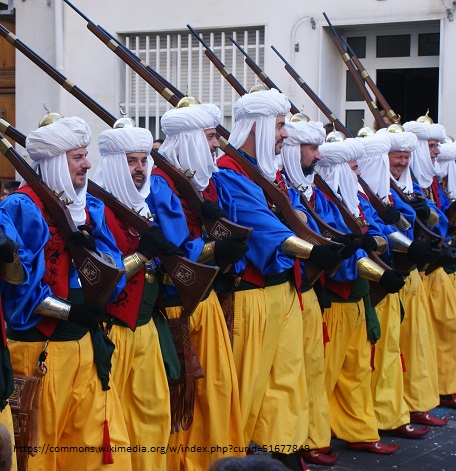
Sóller’s Moros i Cristians, celebrated in the second week of May, reenacts the historical battle between the Moors and Christians:
- Historical Reenactments: The highlight is the dramatic reenactment of the 1561 battle when the villagers of Sóller repelled an attack by Moorish pirates. Participants dress in period costumes, creating a lively and immersive experience.
- Parades and Festivities: The streets of Sóller are filled with parades, music, and dancing, culminating in a grand fireworks display. It’s a celebration of local history and heroism that captivates all who attend.
7. La Patrona in Pollença
La Patrona, celebrated on August 2nd, is another festival commemorating a historic battle against Moorish pirates:
- Mock Battles: The main event is a reenactment of the 1550 battle, where locals, dressed as Moors and Christians, clash in the streets of Pollença. The day ends with a victory parade and fireworks.
- Traditional Music and Dance: Throughout the week, there are concerts, traditional dances, and other cultural events, providing a deep dive into the town’s rich heritage.
These celebrations are more than just events; they are a testament to the island’s enduring traditions and the communal joy of its people and provide a unique and memorable glimpse into Mallorcan life. As a tourist, participating in these fiestas will undoubtedly enhance your understanding and appreciation of this Mediterranean gem. So plan your visit around these vibrant festivities and get ready to celebrate like a local in Mallorca!
Related articles
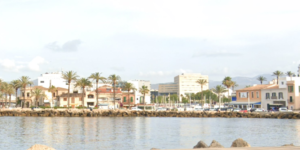
Palma de Mallorca off the beaten track
Palma de Mallorca is renowned for its stunning beaches, vibrant nightlife, and historic landmarks like the majestic La Seu Cathedral.

Top 10 things to see and do in Palma
Mallorca features in almost every tourist brochure that covers Spain and in some people’s minds, it is full of lager
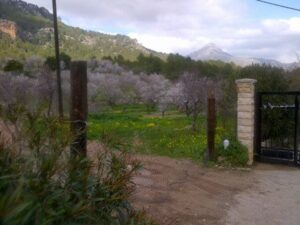
10 places to visit on a day trip from Palma
The nice thing about a small island is that pretty much anywhere on the island constitutes a day trip from
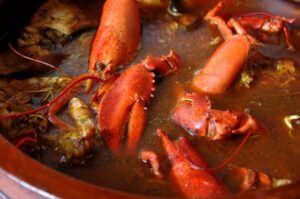
A culinary exploration of Mallorca
Mallorca’s cuisine is a vibrant tapestry woven from Mediterranean influences and local traditions, promising an unforgettable gastronomic journey for tourists
